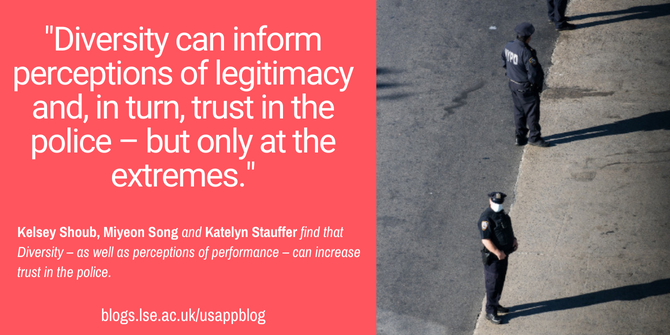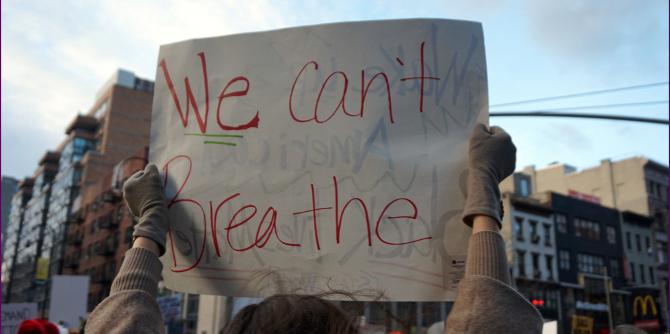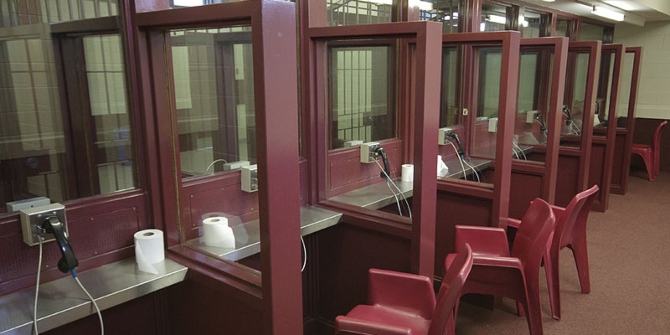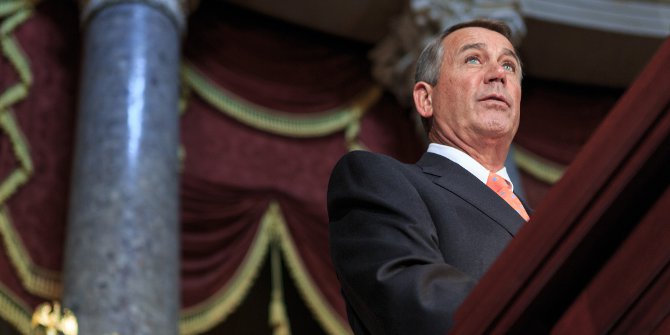

 Alongside recent demands to reform policing in America there have been calls for law enforcement to tackle the low levels of trust many groups – especially people of color and women – feel towards them. In new survey research, Kelsey Shoub, Miyeon Song and Katelyn Stauffer examine how the diversity of police forces relates to public perceptions, and, in comparison to, public responses on performance information. They find that police are only punished by public sentiment when they employ incredibly few people of color, and benefit when their forces are very diverse. In contrast, performance – using measures such as the number of deadly force incidents and felony solve rates – is much more closely linked to the public’s perception of police legitimacy.
Alongside recent demands to reform policing in America there have been calls for law enforcement to tackle the low levels of trust many groups – especially people of color and women – feel towards them. In new survey research, Kelsey Shoub, Miyeon Song and Katelyn Stauffer examine how the diversity of police forces relates to public perceptions, and, in comparison to, public responses on performance information. They find that police are only punished by public sentiment when they employ incredibly few people of color, and benefit when their forces are very diverse. In contrast, performance – using measures such as the number of deadly force incidents and felony solve rates – is much more closely linked to the public’s perception of police legitimacy.
As the United States continues to grapple with issues of race, discrimination, and crime, the relationship between the police and the public has never been more important. Police approval across the US hit an all-time low during the summer 2020 protests, which followed the murder of George Floyd. These in turn spurred discussions of how the police may be reformed and how the public’s trust in the police repaired. Rebuilding trust is crucial, as those who distrust the police are less willing to initiate contact – even when they may need help – and cooperate with the police, which hampers the ability of officers to carry out investigations. Without someone else taking over duties often carried out by the police, low levels of trust in the police may make for less safe communities.
Gender and racial diversity and public trust in the police
Along with proposals to narrow and shift the scope of duties performed by the police and reform policing policy, some have proposed that police forces should increase their racial and gender diversity as a part of their campaign to rebuild trust. One reason to do so is that Black officers and female officers may police differently than their white or male counterparts, decreasing disparities and/or producing better policing outcomes generally. Further, some prior research hints that the simple act of increasing diversity in and of itself might increase trust, improve perceptions of legitimacy, and otherwise improve police-public relations.
Why would increasing gender and racial diversity increase trust in the police and improve perceptions of legitimacy? And, importantly, who might respond to such increases?
People belonging to different race and gender groups are likely to respond differently to increases in diversity, as some have been traditionally included and welcomed onto police forces, such as white Americans and men, while others have been traditionally excluded, such as people of color and women.
Prior research initially focused on how those traditionally excluded from institutions and organizations respond to increases in representation and inclusion. For these groups, people of color and women, we expect that as they see gains in representation then they will view those institutions more favorably. Here, this means, as more people of color and women are hired onto police forces at higher rates, people of color and women will view the police as more legitimate and trustworthy.

Photo by Julian Wan on Unsplash
Prior research provides less guidance on how those who have been traditionally included may respond. On the one hand, men and white Americans may view increased levels of diversity as more legitimate. Alternatively, increases in diversity may create a backlash effect. Those traditionally holding these positions – and those that share their demographic characteristics – may view increased diversity as unfair, delegitimizing the institution in their eyes. However, still others argue that those groups will simply not react to such shifts.
Further, it might be the case that high (or low) levels of diversity matter little for anyone in the face of how agencies are operating and performing.
Diversity matters at the extremes
In a recent research article, we investigated this puzzle, asking how diversity on police forces relates to public perceptions – and how this compares to responses to performance information.
To assess the impact of police agency diversity, policies, and outcomes on the public’s perceptions of the police, we designed and fielded a survey in September 2020. In that survey we gave respondents information about hypothetical police forces’ levels of diversity, performance, and resources. This included the percent of women officers and officers who are people of color, civilian complaints, use of force rates, rates of deadly force incidents, solve rates of reported felonies, the force’s budget, resources allocated to community policing, and the type of community served. We followed up by asking respondents short batteries of questions having to do with perceived legitimacy and accountability.
We find that agency performance clearly informs the public’s assessments of legitimacy and accountability. Higher than average rates of use of (deadly) force incidents and lower than average felony solve rates are heavily punished. Conversely, low numbers of complaints, low rates of use of force incidents, and above average solve rates are rewarded by the public’s assessment. They are linked to higher levels of perceived legitimacy among respondents. Information on the department’s budget and allocation of resources did not shift perceptions and evaluations.
Unlike with performance and resource allocation information, a more nuanced story emerged between information on levels of diversity and perceptions of legitimacy and accountability. We find that at the extremes diversity matters, with gains and losses being larger when considering racial diversity compared to gender diversity. At the lowest levels, when they employ almost no people of color, police departments are punished: they are viewed as less legitimate and less accountable. At the highest levels, police departments are viewed as more legitimate. Further, these trends are more pronounced among black and female respondents respectively. We find no evidence of a backlash among white or male respondents.
In short, diversity can inform perceptions of legitimacy and, in turn, trust in the police – but only at the extremes. Performance plays a far larger role in shaping opinion. Thus, while increasing diversity may help, it is by no means a comprehensive solution.
- This article is based on the paper, ‘How police agency diversity, policies, and outcomes shape citizen trust and willingness to engage’ in Policy Studies Journal.
- Please read our comments policy before commenting.
- Note: This article gives the views of the author, and not the position of USAPP – American Politics and Policy, nor the London School of Economics.
- Shortened URL for this post: https://bit.ly/3iMyY1p






